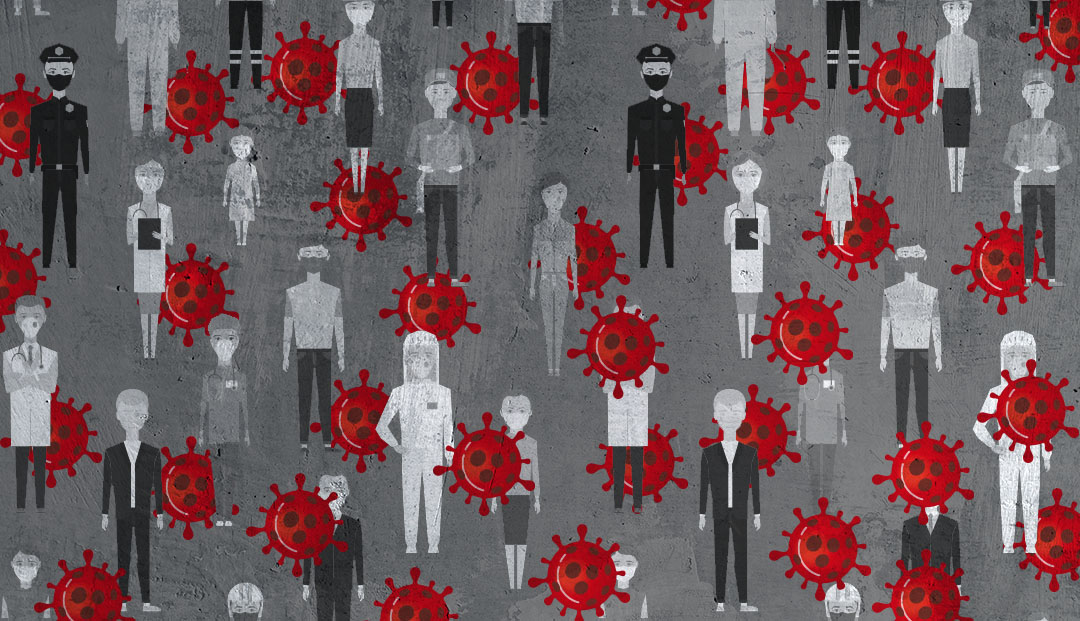Black, Latino, and Native American frontline workers are more likely to work in occupations with a higher risk of COVID-19 exposure with less workplace protection against COVID-19 than other workers, according to a study led by researchers at Princeton University and University of California, Los Angeles (UCLA).
Journalists and researchers have argued that work-related factors are partially responsible for the unequal impact COVID-19 has had on socioeconomically vulnerable groups. Black, Latino, and Native American workers, for instance, are more likely to have jobs which cannot be done remotely.
Now, the COVID-19 pandemic is accentuating disparities, since frontline workers of color are often in occupations with higher risks of virus transmission, infection, and death and may have less workplace protection against the disease.

Given that workplaces remain a hotspot for COVID-19 transmission, the Princeton-UCLA team urges policymakers to protect vulnerable workers by implementing mandatory risk mitigation and health prioritization strategies in workplaces.
“We decided to undertake this analysis because previous studies examined only a few measures of risk, were limited to several racial and ethnic groups, and, most importantly, did not adequately consider variation across occupations in the likelihood that workers would be able to reduce their exposure to COVID-19,” said study co-author Noreen Goldman, Hughes-Rodgers Professor of Demography and Public Affairs at the Princeton School of Public and International Affairs.
Previous research has shown that structural racism in the United States has led to a segregated workforce, with workers of color often holding jobs with greater insecurity and lower occupational standing. Workers with lower occupational standing typically have less power and influence to demand better worker protection and to improve working conditions than those in other occupations.
Goldman and her collaborators wanted to determine the size and scope of these racial and ethnic disparities.
The research team identified frontline workers from 12 different racial groups reported in the 2018 American Community Survey. Frontline occupations are defined as those in which workers are less likely to be able to work from home. The researchers then used occupational standing — or the average educational level of workers — as a proxy for whether workplaces and workers use COVID-19 risk-reduction practices such as personal protection equipment and social distancing. For each occupation, the researchers assessed five types of potential risks related to COVID-19: exposure to infection, physical proximity to others, face-to-face discussions, interactions with the public, and working indoors.
The study revealed that large imbalances among racial groups are, in fact, evident within frontline occupations. Black, Latino, and Native American workers are overrepresented in lower-standing, frontline occupations, such as meat processing, food preparation and serving, janitorial services, housekeeping, and retail store services, that are associated with high risk for COVID-19 transmission. The estimates suggest that Black, Latino, and Native American workers are less protected against COVID-19 at their workplaces, leaving them more vulnerable to contracting and transmitting the virus compared to workers of other racial and ethnic groups.
“The use of occupational standing in the analysis was critical to understanding the disparities. Workers in jobs with high occupational standing, such as physicians and nurses, are more likely to have access to and use personal protective equipment and benefit from other workplace measures to mitigate infection risk than those in lower standing occupations,” Goldman explained.
Goldman noted the study uses data from the American Community Survey that were collected in 2018 and do not account for changes in unemployment rates and occupational distribution since that time. Despite this limitation and increasing COVID-19 vaccination rates, the research team stresses the relevancy of their findings.
Anne Pebley, co-author and professor at UCLA, notes that workplace protections continue to be important because of disparities in vaccination rates and the prevalence of the COVID-19 Delta variant, which appears to spread more easy than earlier variants. Greater work exposures have likely contributed to a higher prevalence of COVID-19 infection among Black, Latino, and Native American populations through the pandemic.
The Occupational Safety and Health Administration currently requires that American workplaces are free of health and safety hazards, but enforcement is limited and inconsistent. The research team stresses the need for greater protections and reinforcement against COVID-19 socioeconomically vulnerable workers.
The paper, “Racial and ethnic differentials in COVID-19-related job exposures by occupational standing in the US” was first published September 1 on PLOS ONE. Goldman’s coauthors are Anne R. Pebley of the University of California, Los Angeles, Keunbok Lee of the University of California, Los Angeles, Theresa Andrasfay Ph.D. '20 of the University of Southern California, and Boriana Pratt of Princeton University.

